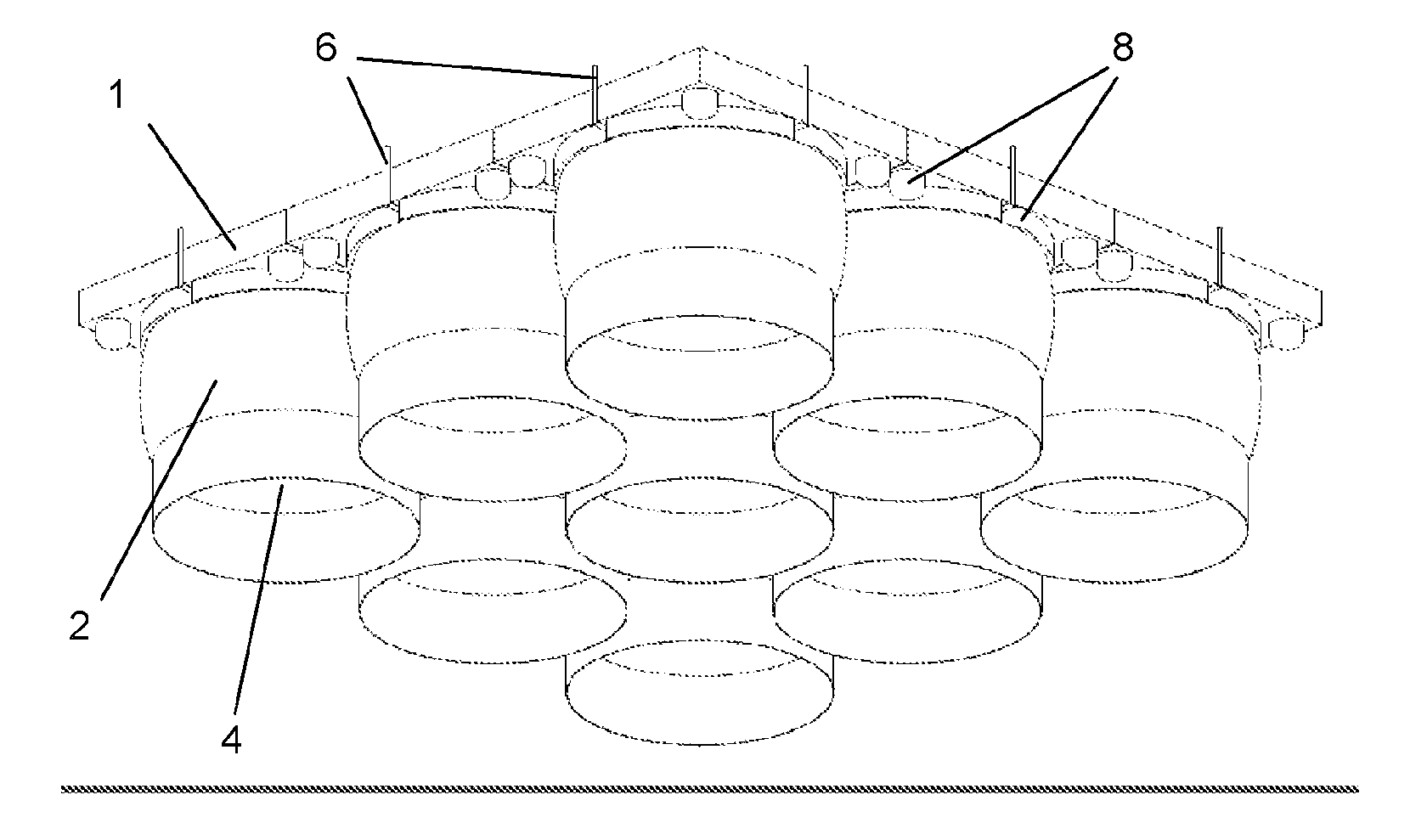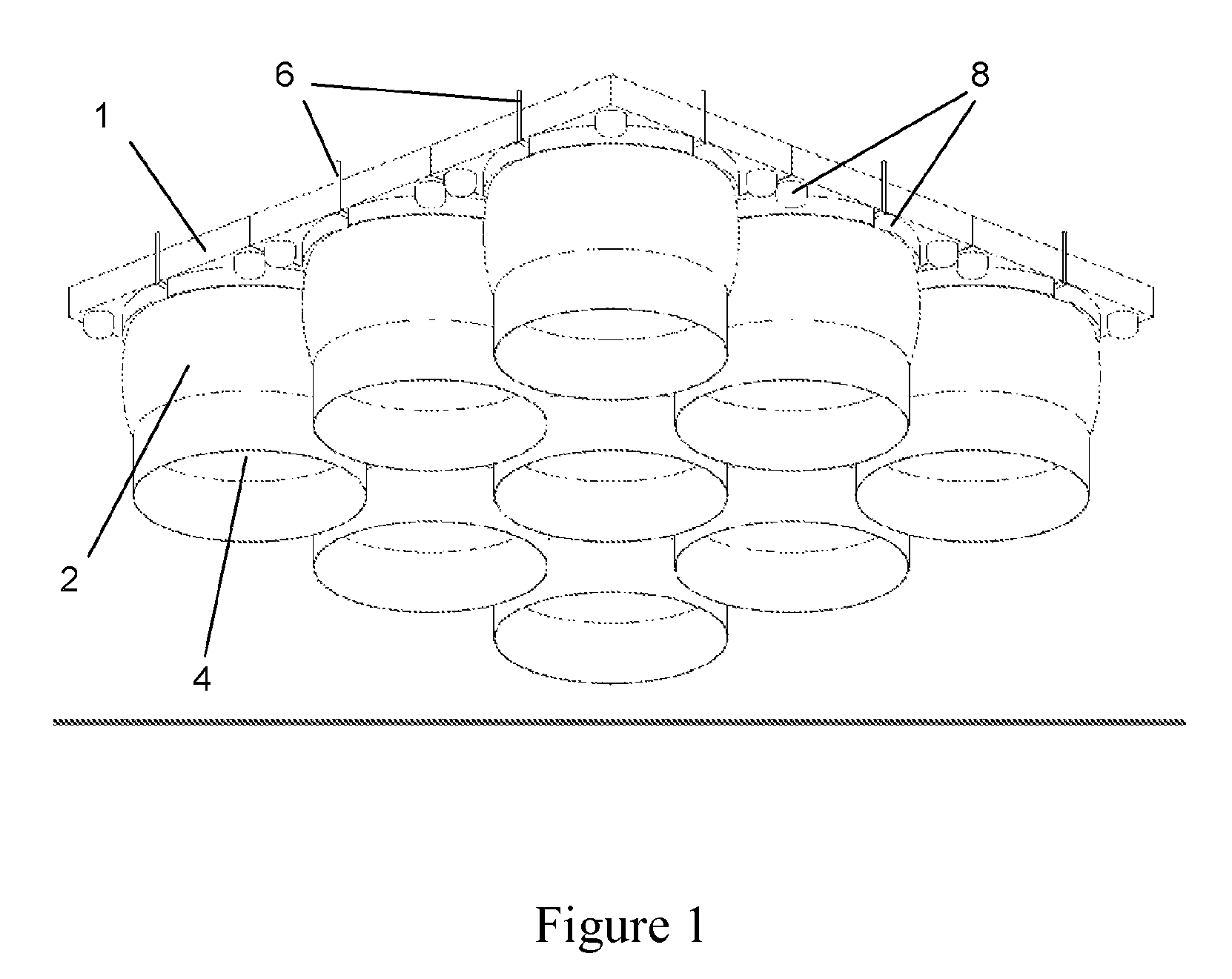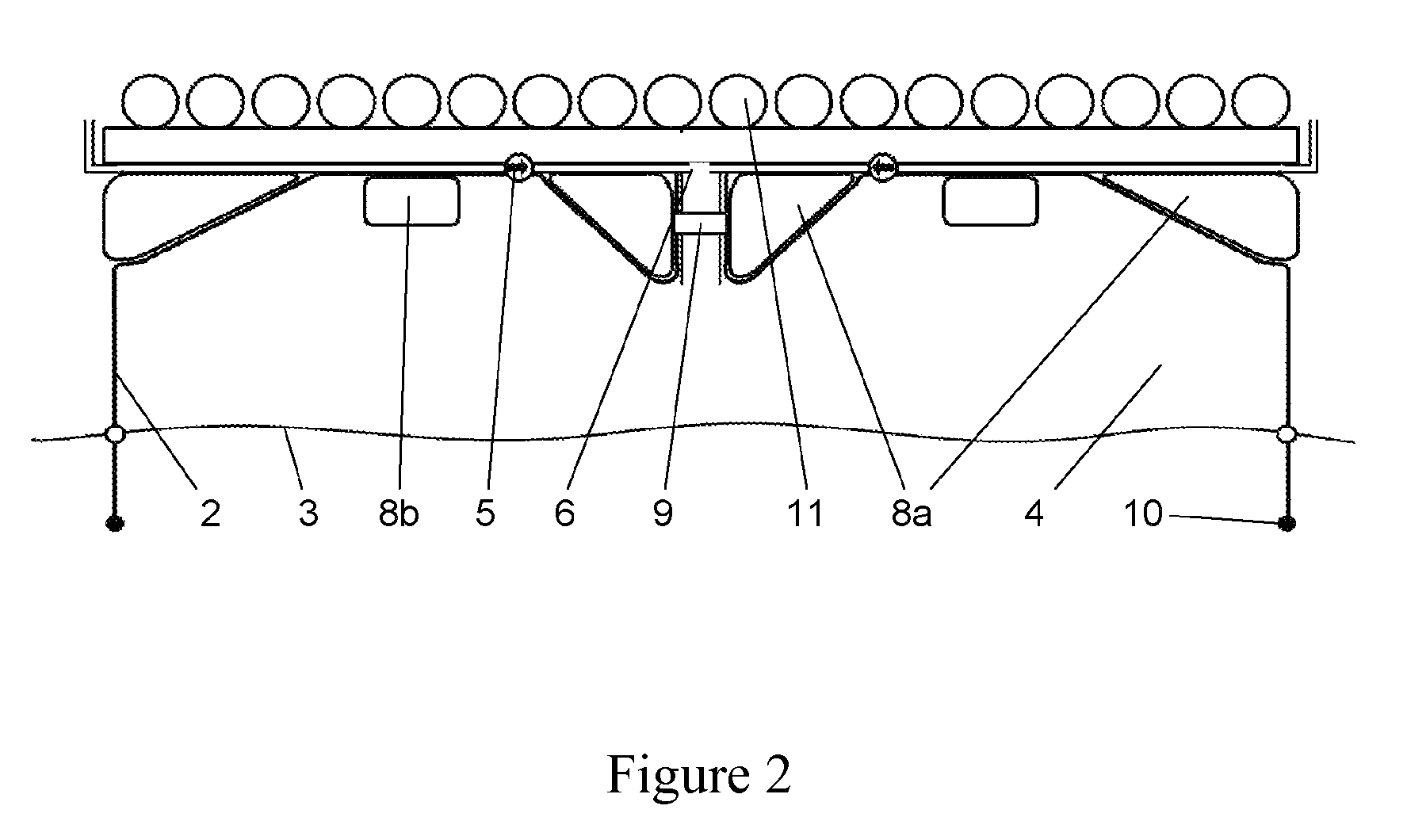Floating platform
a floating platform and platform technology, applied in the field of floating platforms, can solve the problems of reducing the efficiency of solar power plants carried thereon, and achieve the effects of limiting over-pressure, and reducing the number of floating platforms
- Summary
- Abstract
- Description
- Claims
- Application Information
AI Technical Summary
Benefits of technology
Problems solved by technology
Method used
Image
Examples
Embodiment Construction
[0038]FIG. 1 shows a preferred embodiment of the inventive floating platform in an isometric, slanted view from below. The cover element 1, here shown to be continuous, has a square shape. At its bottom side, nine buoyancy bodies 2 are arranged symmetrically around the square (one right in the center of gravity), the cross-sectional areas of which together cover most of the area of the cover element 1.
[0039]Each buoyancy body 2 has (in its pressurized state) a cross-sectional shape that substantially corresponds to an upside-down U profile, the cross section of which is tapered downwards and which, together with the water surface (not shown), defines a hollow space 4. The reference number 6 marks air suction lines leading to pumps (not shown) and from there to the individual buoyancy bodies. Next to the buoyancy bodies and around them, additional closed floating bodies 8 are provided. The latter each have the shape of circular ring segments, as this is better shown in the Figures de...
PUM
 Login to View More
Login to View More Abstract
Description
Claims
Application Information
 Login to View More
Login to View More - R&D
- Intellectual Property
- Life Sciences
- Materials
- Tech Scout
- Unparalleled Data Quality
- Higher Quality Content
- 60% Fewer Hallucinations
Browse by: Latest US Patents, China's latest patents, Technical Efficacy Thesaurus, Application Domain, Technology Topic, Popular Technical Reports.
© 2025 PatSnap. All rights reserved.Legal|Privacy policy|Modern Slavery Act Transparency Statement|Sitemap|About US| Contact US: help@patsnap.com



